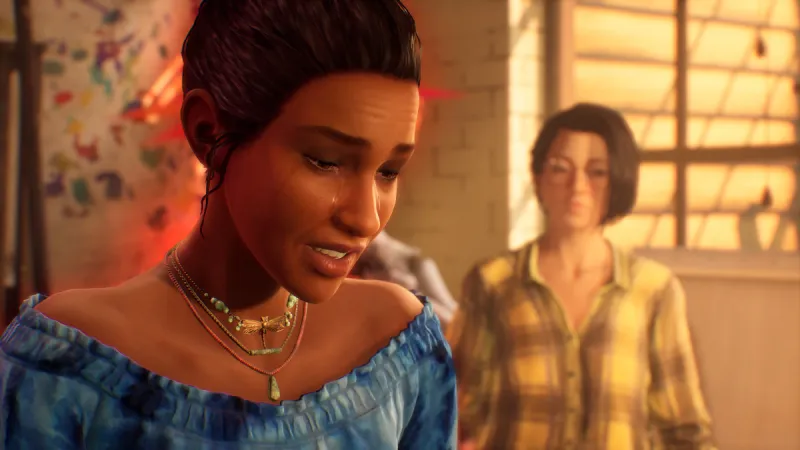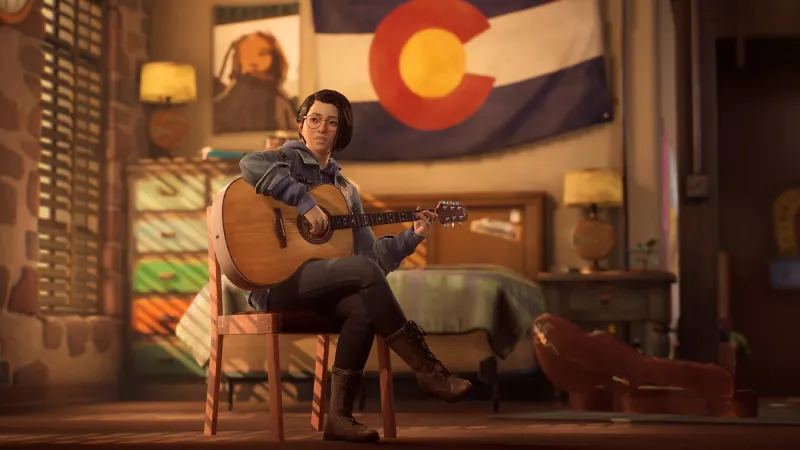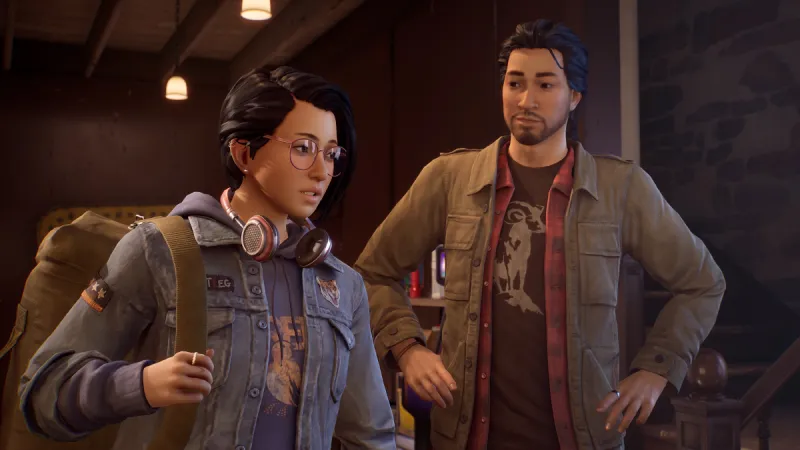Life is Strange made a name for itself by focusing on relatable characters dealing with complex, real-life issues. The series has tackled mental health, identity, and even racism in its stories. Along the way, relationships between characters, such as Chloe and Max’s friendship and Sean and Daniel’s sibling bond, have driven each narrative in memorable ways. The games have always centered on our choices and how they shape the people and world around us. As the series goes into its third iteration, it leans into its strength of authentically portraying life’s hardships and complicated emotions.
The latest entry, Life is Strange: True Colors, is a new starting point, starring a new character with a different power: Empathy. It’s also the first mainline entry not being developed by original development studio Dontnod; instead, it is being created by Deck Nine, the team responsible for the outstanding Before the Storm prequel. Here’s a behind-the-scenes look at how Alex Chen’s journey came to life and why empathy was always a driving force in its creation.
 Your decisions will shape the community of Haven Springs and the relationships Alex forms there
Your decisions will shape the community of Haven Springs and the relationships Alex forms there
How Before The Storm Informed True Colors
Deck Nine is intimately familiar with the Life is Strange world and what makes it unique. The team loved bringing to life Chloe and Rachel’s sweet-but-somber story in Life is Strange: Before the Storm and surprised fans and critics alike in how they gave the character of Chloe more layers and allowed players to understand her plight better. One thing that stood out in the team’s mind was the power of empathy in telling Chloe’s story. It stayed with Deck Nine until Square Enix approached the studio to develop the franchise’s third main entry.
“It was very much a period of discovery, where there was no rush to find the right thing,” says narrative director Jon Zimmerman. “We had the time and the freedom to explore all different ideas. And it was actually pretty soon that we came to this notion of empathy; that was the germ that led to everything else …”
“I know that we wanted to embrace the fact that a narrative adventure game is a literal experience of empathy,” adds senior staff writer Felice Kuan. “We loved that aspect of it, and that was there from the start.”
Both Zimmerman and Kuan were new to writing for video games when they worked on Before the Storm. It let them come in with a fresh perspective, and they quickly realized video games had a big advantage when telling stories. “We would talk a lot about big picture things around narrative adventures, and we often came back to this thing of how absolutely unique and spectacular it is to place a player in the perspective of a character that you want to create a dramatic journey for, and how that differentiates games from every other medium,” Zimmerman says.
Deck Nine quickly became immersed in the fan community for Before the Storm. One of the team’s favorite pieces of feedback was that players who previously didn’t love Chloe changed their tune after playing as her in Before the Storm. “A common thread was that someone would say, ‘Hey, I found Chloe a little bit much in the first game, but then after I was in her shoes, I would die for her,’” Kuan says. This revelation helped solidify that something special happens when players embody a character and experience their point of view.
From here, Deck Nine started focusing on creating True Colors’ protagonist: Alex Chen, the first Asian American lead in the series. A big goal was to maintain the complexity of the characters we’ve seen throughout the series and provide somebody completely different from before.

Bringing Alex To Life
True Colors is a story with many layers, and Alex’s journey cannot be summed up in one sentence. We meet Alex when she’s just leaving a group home after eight years. She’s heading to live with her brother in a town called Haven Springs [see sidebar]. She gets along with her brother, but they haven’t connected in some time. “Her background is intentionally a source of mystery,” Zimmerman says. “She comes from a broken family, and she was separated from her brother at a young age. She doesn’t have anyone in the world looking out for her by the time she comes to Haven Springs. We’ll see in her reuniting with her brother how that brings up the specter of their past and how Alex shies away from wanting to engage with it.”
Instead of her introduction to Haven Springs being a joyful one, tragedy soon strikes when Alex’s brother dies in a mysterious accident. Alex is not only on a quest to find out what truly happened, but she’s also searching for her own place in the world, a community of her own. “[We knew] that Alex was going to be someone for whom that was singularly meaningful to her, because of her background in foster care and never having a real home,” Zimmerman says.
 Erika Mori had to mocap some of Alex's most emotional scenes from her apartment due to COVID-19
Erika Mori had to mocap some of Alex's most emotional scenes from her apartment due to COVID-19
Alex is 21 years old, making her more mature than previous Life is Strange protagonists and giving her more adult situations to confront. She’s at an interesting point in her life, where she’s trying to figure out who she wants to be and what she wants to do. Her life in the group home may not have been great, but it was comfortable. Alex is now leaving all of that, but she sees the limitless possibilities in everything.
Erika Mori, who not only lent her voice to Alex but also performed motion capture for the role, describes Alex’s personality and outlook best: “Alex has an almost insatiable curiosity to discover what makes people tick, understanding the ‘why’ behind words or behavior. However, she has lived with the power [or the curse of the power] of empathy her entire life, and its volatility has made life difficult – making her watchful, cautious, and an outsider by circumstance. But she always carries with her this thread of hope that makes her a character of resilience and (ultimately) joy.”

